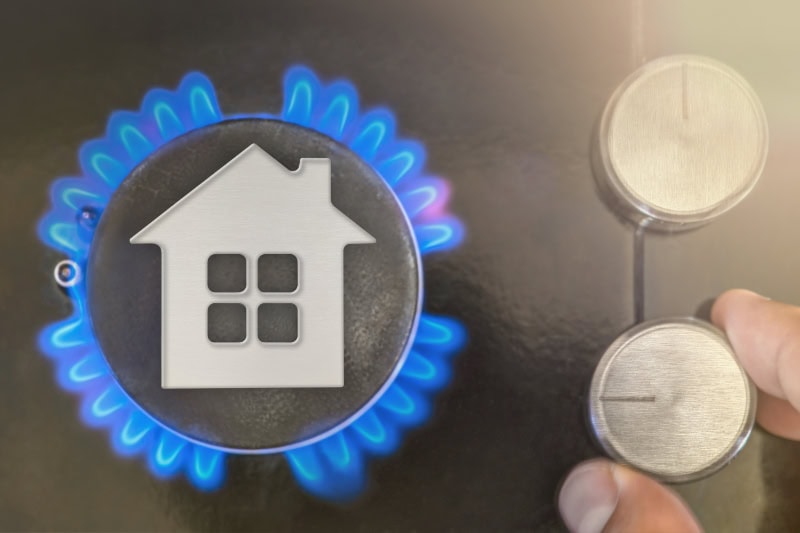How Does My Gas Furnace Work?

On a frosty winter’s day here in Gloucester County, your gas furnace is hard at work, keeping your home warm and cozy. Feeling grateful? You’re not alone—it is one of the most popular forms of heating, as American as apple pie.
In 1919, New Jersey inventor Alice H. Parker filed a patent for the first gas-fueled furnace. Years later, the basic technology is the same—only it burns less gas. In fact, This Old House reviewed top furnace brands and notes that some models burn at 98 to 99 percent efficiency. Keep this in mind if you’ve owned your heater for 10 years or longer.
Our team at Vaughan Comfort Services Inc. can help you save big bucks on your monthly utility bill by replacing your aging furnace. And while we’re on the topic, we can help with your other HVAC needs: air conditioning, heat pumps, indoor air quality (IAQ), and more. All you need to do is call.
Your Gas Furnace in Gloucester County
Furnaces that burn natural gas have four basic elements:
1. The Thermostat
Your thermostat is the eyes and ears of the operation. If it senses your Gloucester County home is below the target temperature, it sends signals to your furnace. Then, your furnace continues to cycle until your home is adequately warm. Finally, when it detects the desired temperature, the thermostat tells your furnace to stop running (until further notice).
2. The Ignitor
When your thermostat sends out a signal, the ignitor is the first to respond. Like the ignition starts your car—the ignitor starts your furnace.
If your heater is a decade old (or older), the ignitor might be a pilot light. The pilot stays lit 24/7, running on a small stream of natural gas. Newer furnaces have an electric ignitor, a considerably safer option. Electric ignitors are less risky because if your pilot goes out, you will quickly have a house full of gas fumes.
Ready to ditch your older furnace with a pilot light? Our pros at Vaughan Comfort Services Inc can recommend the best solution for your heating needs and budget. Schedule a consultation and consider upgrading!
3. The Combustion Chamber
Next on the chain is the combustion chamber. This is where the ignitor lights the fuel. The natural gas becomes intertwined with oxygen supplied via a vent system or draft hood. The oxygen ensures that the fuel burns both cleanly and efficiently.
Besides taking in oxygen, the ventilation system pushes out exhaust through your flue. Economy flues are usually made out of galvanized steel. However, homeowners with polypropylene venting see long-term savings due to higher efficiency. The latter is also quite easy to install.
Whatever your flue is made out of—stay on top of maintenance. A clean flue ensures healthy air.
4. The Heat Exchanger
The combustion chamber emits heat, which gets collected by the heat exchanger. From there, the heat exchanger collects and distributes the treated air to your ductwork using burner-heated metal tubes.
When the tubes reach the right temperature, the furnace motor kicks on and begins blowing the air throughout your home with the help of fans.
High-efficiency furnaces have variable-speed blowers, which use less energy and allow tighter temperature control. These premium models may also have multiple heat exchangers, which helps your furnace use less fuel.
Remember to schedule seasonal maintenance—a cracked heat exchanger can lead to a dangerous carbon monoxide (CO) leak.
Choose Vaughan Comfort Services Inc for Furnace Tune-Ups
Think of pre-season maintenance like a physical for your furnace. It is designed to catch minor issues before they become major problems. Here is what a furnace tune-up typically includes:
- We thoroughly inspect key componenets such as the heat exchanger, the burners, the ignition system or the pilot light, the venting system, safety controls, and electrical connections.
- We clean and lubricate the blower motor and other moving parts. We also clean dust and soot from the burners.
- Performance testing and calibration is an essential part of any tune-up. That includes thermostat calibrartion and a gas pressure and combustion analysis.
- Carbon Monoxide testing and gas line leak detection are crucial safety checks.
A gas furnace tune-up is an investment in safety, efficiency, and longevity. It helps prevent unexpected breakdowns, reduces energy consumption, prolongs the life of your furnace, and ensures your home stays warm and safe throughout the heating season.
Get Expert HVAC Service in Gloucester County
Vaughan Comfort Services Inc. is pleased to offer second-to-none heating and cooling services. Our certified HVAC specialists repair, maintain, and install all types of heating, cooling, and air quality systems. For prompt assistance, call us at 856-627-0303 or request service online.
